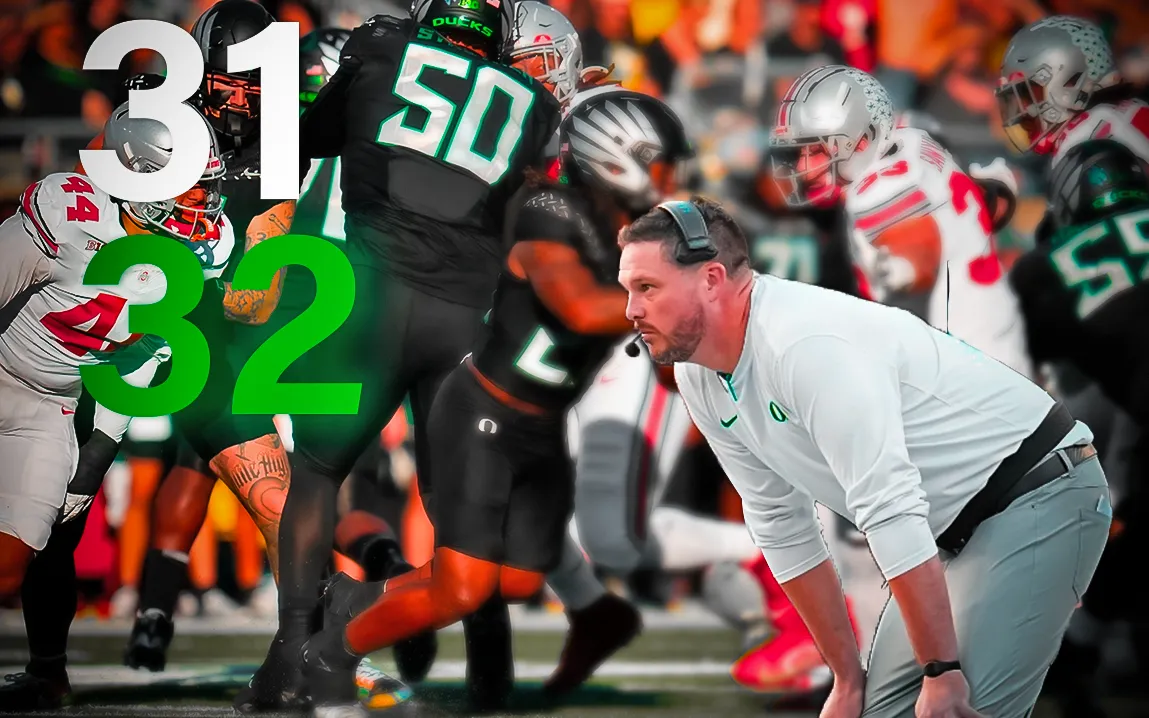An electrifying and controversial twist to the latest match between No. 2 Oregon Ducks and No. 4 Ohio State Buckeyes as Oregon goes for an unusual tactic that sealed their win: taking an infamous “too many men on the field” penalty in the last minutes of the game.
Such a strategy, played out at the dying embers of Oregon’s 31-28 victory, has given rise to a huge controversy among the fan base and pundits in general about intentional fouls in football and the line between game management and sportsmanship.
It was a contest that had been held at Ohio Stadium and had been a close fight during the four quarters with each team countering each other, but just when the outcome was hanging in the balance, as Ohio State did all in their power to bridge the narrow gap remaining, Oregon’s coaching staff made an audacious move.
As the clock was running out, Oregon led by a small margin, while Ohio State rallied. Rather than spiking the ball to punt after failing on a third down, Oregon intentionally let too many players remain on the field, forcing a delay-of-game penalty.
The strategic decision to draw the “too many men” penalty wasn’t to gain yardage but to burn more time off the clock, denying Ohio State a crucial opportunity to stage a final drive. Oregon’s coaching staff understood that the penalty would cost them only five yards but would allow them to drain valuable seconds, minimizing the time Ohio State would have for a comeback. After the penalty, Oregon punted the ball, leaving the Buckeyes with little time to mount a response.
Oregon head coach Dan Lanning addressed the decision in the post-game press conference, defending the tactic as a calculated move within the rules of the game. “It was a part of the strategy,” Lanning explained. “We knew we were going to take the penalty, but it gave us the opportunity to wind the clock down and limit their time to make a play. It was about clock management and putting our team in the best position to win.”
While the strategy was effective, the reaction to the move has been mixed. Most Oregon fans argued that it was a smart play to maintain their lead and win the tightly contested game. There were also others, even Ohio State supporters, who thought this kind of tactic was unsportsmanlike and necessarily undermines what a real game is meant to be about – fair game.
In addition, even football analysts are divided on the issue. On one hand, taking a knee or running out of bounds to stop the clock is considered smart game management; some view using penalties strategically as part and parcel of smart game management. On the other hand, others say that encouraging breaking the rules for tactical reasons is bad precedent and can lead to more manipulation of the rules to suit future needs.
Despite all the controversy, Oregon must have been on top of one of the best teams in the country after defeating Ohio State. The game itself was such a nail-biter that two teams could well prove their skills and determination in a manner nobody even could imagine. At the end, Oregon’s strategy, including its intentional penalty, outsmarted Ohio State.
It will be interesting to see if other teams follow the same method, or if the NCAA takes action, at the end of the season. As it stands right now, this is Oregon’s victory and one that extols the virtues of football strategy as much as that strategy is questionable.




